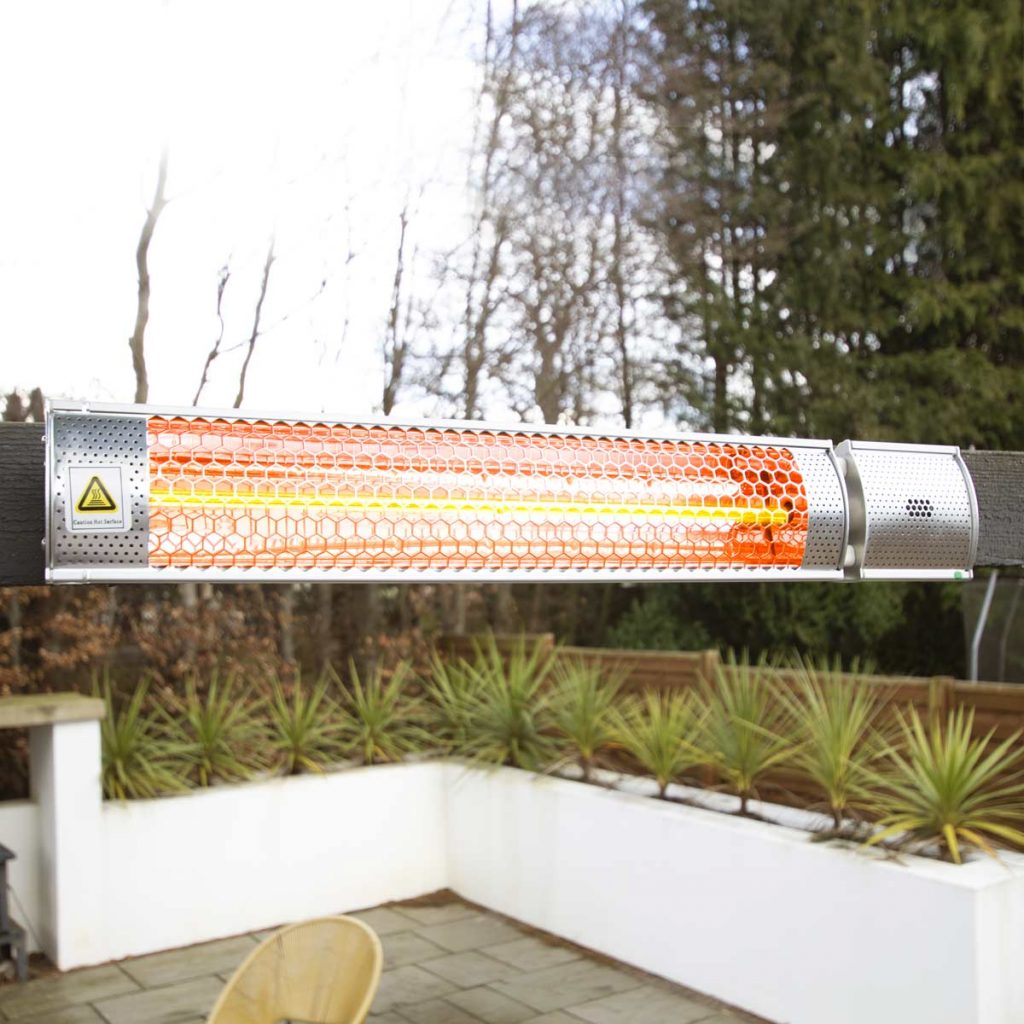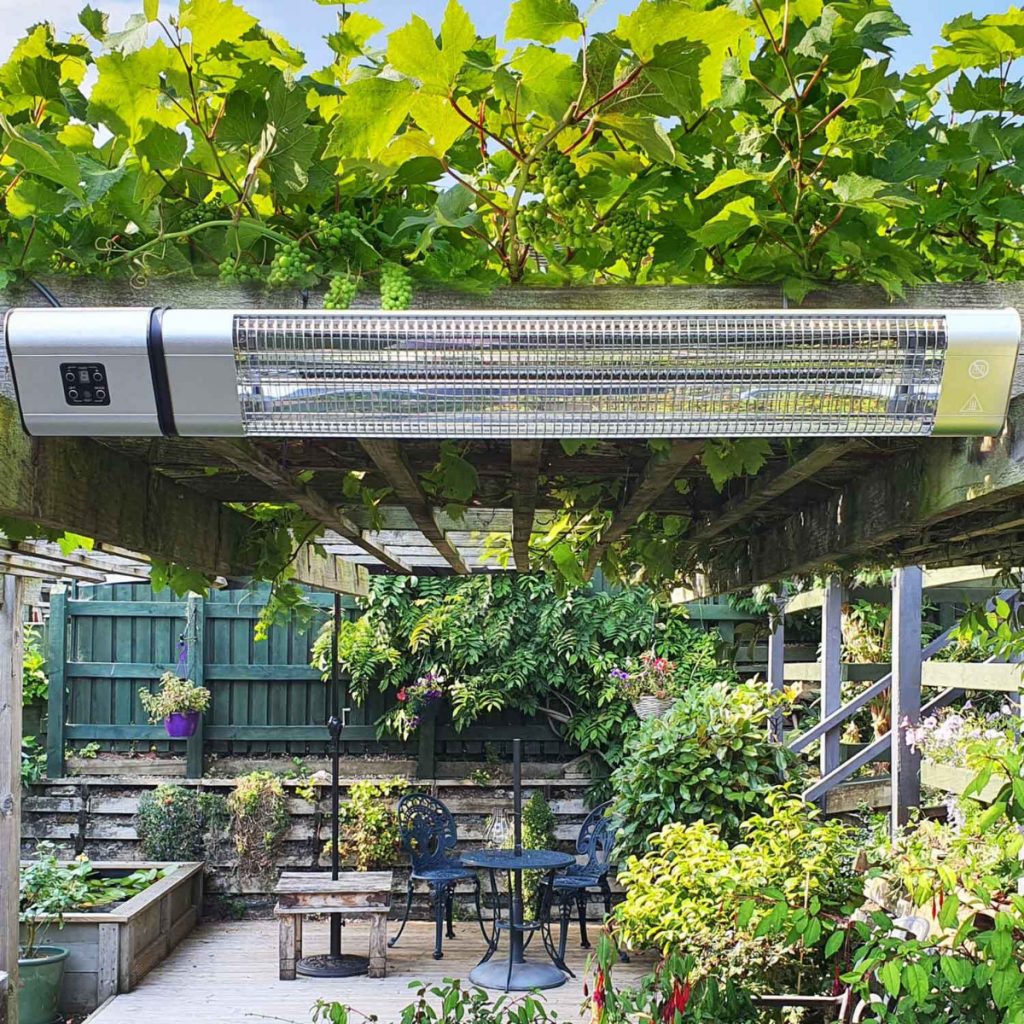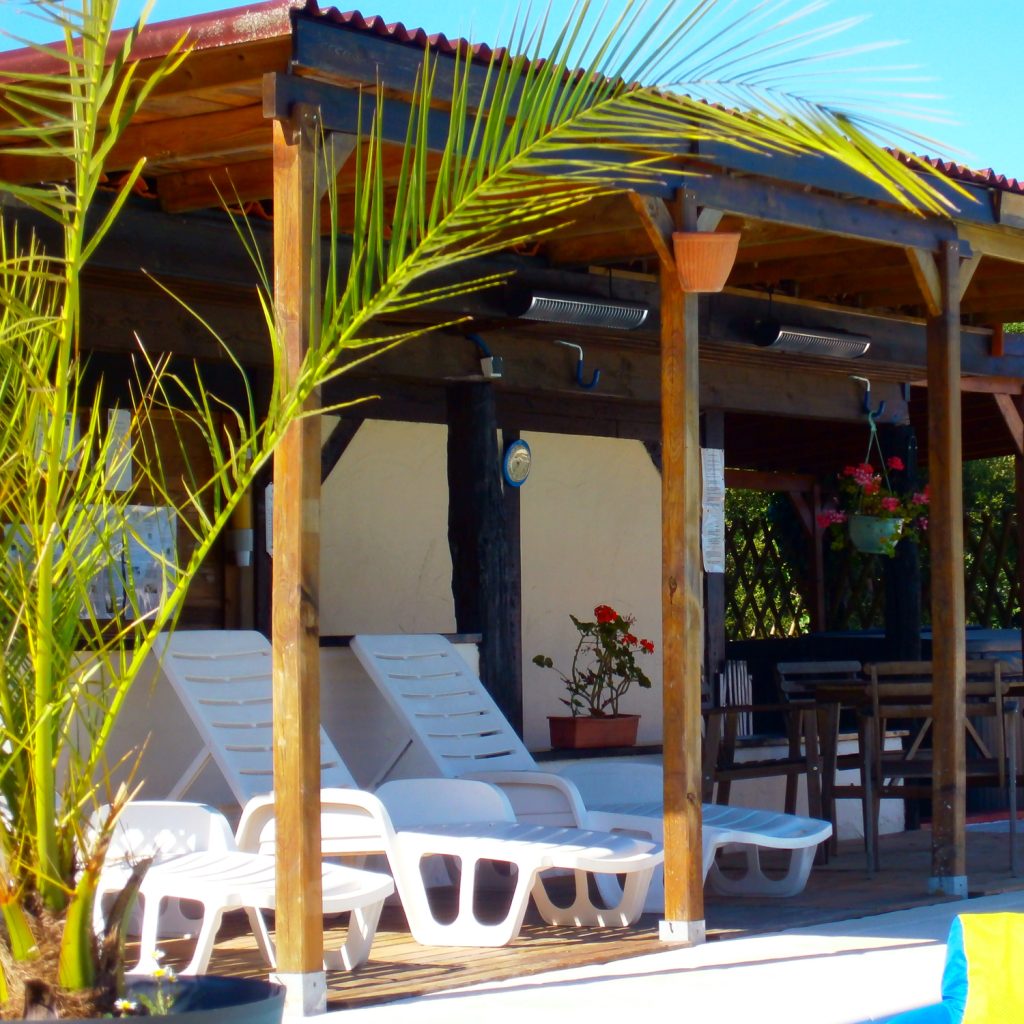Highly versatile, a garden or patio area is perfect for a morning coffee, an afternoon read or an evening get-together – but oftentimes, the weather throws a spanner in the works. Come rain or shine, by installing an infrared patio heater, you’re making your outdoor haven accessible all year round. But how exactly do they work? There are various types of outdoor heater – check out our blog for the rundown – but the way infrared technology works is pretty special, and we’re here to go into why.
What is infrared?
There are two main methods of heat transfer – convection and radiation. Radiation, or infrared warmth, is much more robust. Heaters that convert energy into radiation include radiators, unsurprisingly, but also infrared panels and electric patio heaters. Infrared is a type of heat that travels as an electromagnetic wave, penetrating people and objects. It’s totally harmless and feels gentle – it’s the same type of heat our bodies create and is so safe it’s actually used to keep babies toasty in incubation units. Infrared warmth is perfect for outdoor applications, as it keeps people comfortable regardless of outside air temperature.

Convection is the other type, and it’s pretty common – it’s found in radiators and panel heaters. It works by heating up the air around you, making surroundings comfortable. Convection is great for making you feel warm in a trice, but it doesn’t have a great deal of lasting power. As air moves around freely, an open door or a poorly insulated window will let any generated hot air escape – wasting energy and consequently, money. So, suffice to say, putting a convection-based heater outside is rather pointless – there’s no fending off airflow when you’re surrounded by it.
Near infrared
What is it?
Near infrared is a form of shortwave infrared. It has a high frequency and a short wavelength. This means it is easily transmissible – it gets to work quickly and can travel far – but its level of absorption isn’t as high as some other forms of infrared. It creates intense heat when nearby the unit, so it’s ideal for short-term heat in locations particularly exposed to the elements.
| Pros | Cons |
| Invigorating heat that begins warming in minutes | Near infrared can sometimes feel overwhelming when used for extended periods |
| Robust radiant heat, works regardless of airflow | Most near infrared heaters emit light, which some users may find distracting |
| Wide range of inexpensive units with various design schemes | |
| Weatherproof IP ratings for worry-free outdoor installation | |
| Perfect for close or far range heating | |
| Can be used indoors for a quick burst of intense warmth | |
| Very transmissive – most of the energy is used to project heat |
Where to install a near infrared patio heater
Any outdoor location in which more intense heating is required. A patio wall that overlooks a seating area or a pergola in need of spot-specific heating would benefit from a near infrared heater.
In the spotlight: The Ecostrad Sunglo
At a glance:
- Instant near infrared warmth
- Remote control functionality for hard-to-reach accessibility
- 2-stage power output to reduce energy loss when full power is not necessary
The Ecostrad Sunglo delivers quick, soothing heat at the touch of a button. Installable on walls, awnings or parasols – the Sunglo can also be paired with a compatible stand for portable, freestanding use. An attractive honeycomb grill conceals a halogen bulb with an estimated 6,000 hours of use – and when coupled with its 2-year manufacturer’s warranty, it’s set to give you warm gardens, patios and pergolas for years to come.
Mediumwave infrared
What is it?
Many people consider mediumwave infrared to be the best of both worlds, the sweet spot between transmissivity and absorbency. It is still strong enough to travel far distances, and it’s great for outdoor use, so can withstand a lot of airflow. But, by operating at a slightly lower temperature, its wavelength is longer, around 3 microns. This is the level in which humans start absorbing infrared, providing warmth on a deeper level which sticks around even after the unit has been switched off.
| Pros | Cons |
| Begins warming people and objects quickly | Especially large or exposed areas may be better equipped with a near infrared heater |
| A perfect balance of natural warmth and effective reach | Indoor areas in need of a primary heat source may benefit more from a far infrared heater |
| Weatherproof IP ratings for worry-free outdoor installation | |
| Wide range of inexpensive units with various design schemes | |
| A more natural glow, a win-win for outdoor areas needing ambient lighting | |
| Perfect for close or far range heating |
Where to install a mediumwave infrared patio heater
Mediumwave infrared heaters are an excellent catch-all solution for a range of locations. Outdoors or indoors, if your space needs a robust heating source that warms surrounding people on a deeper, more durable level, look no further than a mediumwave infrared heater.
In the spotlight: The Ecostrad Cirrus
At a glance:
1-9 hour timer for set-and-forget heating
Robust IP65 weatherproof rating
Zero maintenance running
The Ecostrad Cirrus delivers this reliable mediumwave infrared heat all via a stylish aluminium frame, primed to bring a whole range of outdoor spaces up to temperature within an impressive ten seconds. With in-built controls and maintenance-free operation, the Cirrus has everything for convenient warmth whenever it’s required. Installed on walls or ceilings by a professional electrician – or totally DIY if you have the props – this electric patio heater is the no-fuss answer to comfortable gardens, patios, and courtyards.
Far infrared
What is it?
Far infrared creates radiant heat with longer wavelengths – equalling in a much higher absorbency rate. Far infrared waves are able to warm the objects and people in its path thoroughly, so even once the heater has technically been turned off, they still feel the benefits. Unlike near infrared, its warmth feels completely natural – it’s a mellow kind of heat that mirrors the sun on a pleasant day.
| Pros | Cons |
| Gentle radiant warmth that feels natural and soothing, no overwhelming bursts of heat | They work best in locations with some covering. If your space is totally exposed, a far infrared heater will not be as effective |
| Zero light output for totally interference-free heating | It can take longer than some other forms of infrared to feel its warmth |
| Weatherproof IP ratings for worry-free outdoor installation | |
| Wide range of inexpensive units with various design schemes | |
| Ideal for semi-exposed locations with some shelter and indoor spots |
Where to install a far infrared patio heater?
Semi-exposed outdoor locations, garages, offices and open plan spaces.
In the spotlight: The Herschel Aspect XL
At a glance:
- Direct, gentle radiant heat
- Stylish stainless-steel housing, complementary to a range of settings
- Primed for external control via digital thermostats
The perfect fit for larger indoor rooms or concealed outdoor spaces, the Herschel Aspect brings stylish, understated infrared heating to the forefront, all with energy-efficiency in mind. Producing zero visible light, the Aspect is a great choice for any location where either concentration or relaxation take priority – offices, garages, or home cinemas, to name a few. When paired with an external controller, the selection of functions on offer help to reduce the Aspect’s energy consumption, like 7-day programming, open window detection and adaptive start.
Discover the power of infrared technology today
Now you know exactly how electric patio heaters work, along with the various types, it’s time to explore our selection of units for yourself . Whether you’re looking for a burst of warmth to bring life to an unused patio, or add the finishing touch to a garden revamp, our friendly UK advisors are on hand to help you along your journey.




